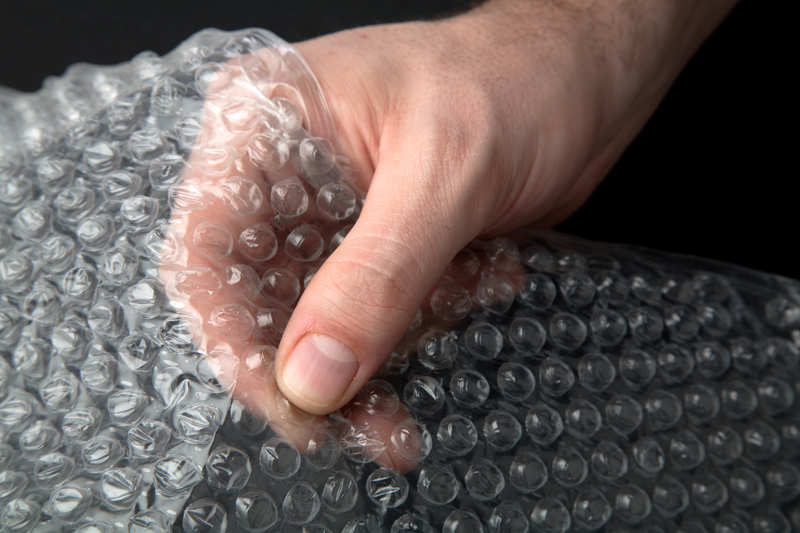Streamlined Methods for Bed and Mattress Relocation
Posted on 20/06/2025
Efficient and Streamlined Methods for Bed and Mattress Relocation
Moving your bedroom essentials can be stressful, but with the right techniques, the relocation of beds and mattresses becomes a seamless task. In this guide, we'll explore the most streamlined methods for bed and mattress relocation, ensuring your move is smooth, efficient, and hassle-free.

Why Streamlining Bed and Mattress Relocation Matters
A comfortable bed and a quality mattress are investments toward your daily rest and overall well-being. During a move, improper handling of these items can result in damage, increased replacement costs, or even injury. Streamlining the bed and mattress moving process not only minimizes potential problems but also saves significant time and energy, letting you focus on settling into your new home.
Pre-Move Preparations: Laying the Groundwork for Success
1. Assess Your Furniture and Sleeping Setup
- Measure your bed frame and mattress dimensions.
- Determine if disassembly is needed for efficient transport or if doorways and stairwells are wide enough for moving the items as-is.
- Inspect both bed and mattress for any existing damage and document their condition.
2. Gather the Necessary Tools and Materials
- Mattress bags or covers for protection against dust, dirt, and moisture.
- Tool kits for disassembling bed frames.
- Packing materials like bubble wrap, tape, and zip lock bags for screws, nuts, and bolts.
- Furniture sliders or moving blankets to ease the lifting process and safeguard floors.
- Heavy-duty straps or ropes for securing mattress and frame during transport.
Packing Strategies: Simplifying Bed and Mattress Transportation
3. Disassembling the Bed Frame
The cornerstone of streamlined bed and mattress transportation is careful disassembly of the bed frame. Doing so makes it lighter, safer, and easier to maneuver. Here's how to do it efficiently:
- Remove bedding and pillows. Wash and securely pack them in labeled bags or boxes.
- Take apart the headboard, footboard, and side rails. Use the appropriate screwdriver or wrench.
- Keep screws and hardware together in labeled plastic bags. Tape them to part of the frame or store safely in your 'essentials' box.
- Wrap each part of the frame with moving blankets or bubble wrap to prevent scratches and chips during the journey.
4. Preparing and Packing Your Mattress
Mattresses need special handling due to their bulk and susceptibility to stains and sagging. To keep your mattress safe during relocation:
- Place the mattress in a durable, waterproof mattress bag. If possible, vacuum seal for added protection and to minimize bulk.
- Keep the mattress upright when transporting to prevent bending and structural damage.
- Never place heavy materials atop the mattress during the move.
- If possible, secure the mattress against a solid surface in the moving truck (avoid placing near sharp or pointed objects).
Streamlined Bed and Mattress Moving Techniques
5. Using Proper Lifting and Carrying Methods
Protect your back, your mattress, and your home with proper lifting strategies. Here are top tips:
- Always lift with your legs, not your back, and keep the item close to your body.
- For bulky or heavy mattresses, use a mattress sling or straps and work with a partner for better stability.
- Use furniture sliders for hardwood or tiled floors--this cuts friction and makes heavy items easier to move.
6. Navigating Hallways, Corners, and Doorways
- Pre-plan your path before moving the bed or mattress.
- Measure doorways and hallways to ensure clear passage. Remove doors from hinges if needed.
- Carry mattresses on their sides when possible--it offers better control and visibility.
- Protect the corners of the mattress and frame with extra padding to prevent damage to both your furniture and your walls.
7. Loading into the Moving Vehicle
A strategic loading process is key for a streamlined move:
- Place the mattress upright along one wall of the truck or van.
- Use straps to anchor the mattress to prevent shifting in transit.
- Load the heaviest bed frame components toward the bottom or back of the vehicle to stabilize the load.
Specialized Solutions for Mattress and Bed Relocation
8. Hiring Professional Bed and Mattress Movers
If you have a luxury or specialty mattress, a complex bed frame, or simply want peace of mind, consider hiring professional moving services that specialize in bed and mattress relocation. They use expert packing methods, right tools, and appropriate vehicles, ensuring that your sleeping setup arrives intact and undamaged.
- Pros: Stress-free experience, insured transit, and efficient loading/unloading.
- Cons: Additional cost, must coordinate scheduling, may need to oversee the process regardless.
9. DIY Methods: Renting Mattress Bags and Moving Equipment
Many moving companies offer rental of mattress covers, dollies, and special straps designed for streamlined bed moving. With the right resources and some muscle, you can efficiently transport your own furniture and cut costs. Always check reviews for mattress bag quality and ensure that rental equipment is in good condition before use.
10. Considering Bed-in-a-Box and Modular Bed Solutions
Recent advances in mattress and furniture design allow for easier moving:
- Bed-in-a-box mattresses can be compressed and boxed, dramatically improving portability.
- Modular bed frames can be flat-packed and reassembled with minimum tools, facilitating straightforward transit and setup.
Consider these options for your next upgrade if you anticipate future relocations.
After the Move: Reassembling Beds and Restoring Mattresses
11. Assembling Bed Frames with Care
Once you arrive at your new residence:
- Unpack all bed frame components and check for all necessary hardware before starting assembly.
- Lay out all parts in the room for easy access.
- Follow manufacturer guidelines or take photos during disassembly for reference.
- Tighten bolts and screws securely, but avoid overtightening, as it can strip threads or crack wood.
Pro tip: Place felt pads on bed legs before assembly to protect new floors from scratches.
12. Restoring and Refreshing Your Mattress
- Let the mattress air out for several hours after unpacking and before making the bed. This dissipates any moving-related odors and moisture.
- Check for signs of wear or damage; rotate the mattress if needed to even out pressure points.
- Install a clean mattress protector for an extra layer of hygiene and preservation.
Tips for Streamlining Future Bed and Mattress Moves
13. Maintain Original Packing Materials
Whenever possible, retain the original mattress bag and box or the manufacturer's assembly manual for your bed frame. This will simplify future relocations and offer better long-term protection for your investment.
14. Label Everything Clearly
- Label hardware bags by location (e.g., "headboard bolts").
- Mark the mattress bag with the mattress size and orientation for quick reference.
- Include instructions or photos with disassembled frames for easier reassembly at your new home.
15. Regularly Inspect Your Bed and Mattress
After each move, inspect for signs of structural fatigue in the frame, damage to slats, or compromised mattress support. Early detection helps avoid problems affecting sleep quality and safety.
Common Mistakes in Bed and Mattress Relocation (and How to Avoid Them)
- Failing to protect the mattress: Always use a thick, waterproof cover to shield against moisture, pests, and dirt.
- Attempting to move a bed frame fully assembled: Most bed frames are too cumbersome and prone to damage if not disassembled.
- Misplacing hardware: Secure all small bolts and screws in a labeled bag, preferably taped to a bed part.
- Improper lifting and carrying: Avoid injury by using correct techniques and working with a partner for stability.
- Overloading the mattress in the vehicle: Place the mattress on its side and avoid pinning it under heavy furniture.

Conclusion: Make Your Bed and Mattress Move Simple and Seamless
Relocating beds and mattresses doesn't have to be an overwhelming ordeal. By following the streamlined methods for bed and mattress relocation outlined above--from preparation and packing to careful installation in your new home--you protect your investments and ensure restful sleep after your moving day. Whether you choose professional movers or a well-equipped DIY strategy, planning ahead, using the right packing materials, and relying on time-tested moving techniques will make your transition as smooth as possible.
Remember: An efficient move isn't just about speed--it's about safety, comfort, and the peace of mind of knowing you'll sleep soundly in your new space.
Frequently Asked Questions about Bed and Mattress Relocation
Can I move a king-size mattress by myself?
It is possible, but not recommended due to the size and weight. Always recruit at least one helper and use carrying straps or a mattress sling for support.
Do I need to clean my mattress before moving it?
It's best to vacuum and air out your mattress before packing. This prevents transferring dust or allergens to your new home.
What's the worst mistake to avoid when moving beds and mattresses?
The biggest mistake is failing to protect your mattress and frame. A simple plastic cover or moving blanket can prevent significant damage during the move.
Should I hire professional movers for my bed and mattress?
If you're relocating a specialty or oversized bed, or moving long-distance, professional movers provide expertise and peace of mind. For short local moves, with the right equipment and planning, a DIY relocation is perfectly manageable.
For more guides on hassle-free moving, bookmark this article on streamlined bed and mattress relocation, and enjoy your fresh start with peace of mind!

 Guide price for the hire of a Transit Van /up to 300 cu ft/
Guide price for the hire of a Transit Van /up to 300 cu ft/